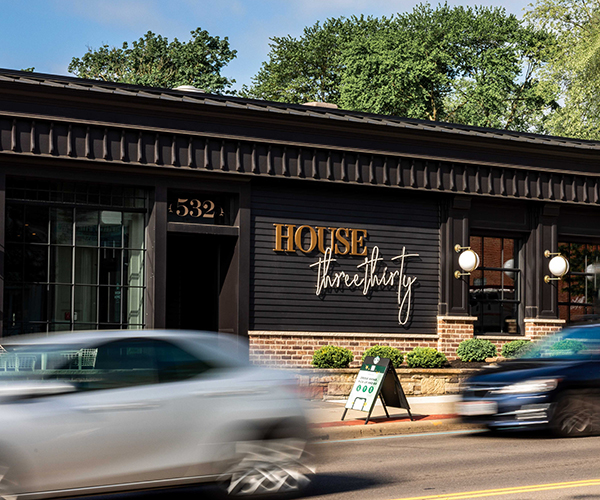It is a fairly reliable rule of thumb, though, that when a film genre fades in popularity, the academic critics will step forward to help nurse it through the hard times. Such is the case with Guts & Glory:
Great American War Movies, by Lawrence Suid, who began his film studies under the watchful eye of Lou Giannetti at Case Western Reserve. Suid's work exemplifies a new direction of study in American film circles, the genre approach — with which critics on this side of the Atlantic are trying to make sense out of the recent indecipherable babblings of the European semiologists. Simply put, the genre approach involves isolating certain artistic pat- terns that embody broad cultural myths, then analyzing individual works in terms of their relationship to the evolution of the pattern as a whole, their social-psychological relevance for the audience, and their artistic significance for the careers of the specific personalities who create them.
Though far from being the definitive study of American war movies, Guts & Glory has a great deal to offer the serious student of the form. Not the least of its virtues is its broad scope. Without being superficial, Suid manages to cover some 70-plus films, from King Vidor's 1925 silent classic, The Big Parade (which gave respectability and stature to the emerging tradition) to the yet-to-be-released Apocalypse Now, Francis Ford Coppola's long awaited epic of the American tragedy in Vietnam. Along the way one will find particularly cogent discussions of the John Wayne mystique, as well as the development of the anti-military basis in such films as Dr. Strangelove, Fail Safe, The Americanization of Emily and M.A.S.H.
Suid's stated purpose in writing Guts & Glory is not to address questions of art in relation to these films, but to study the image of the American military as seen through the eyes of the film industry. Toward this end, he has included a wealth of detailed information gleaned from his own extensive interviews with writers, directors, technicians and performers involved in the production of war films — as well as with members of the armed forces who, convinced of the value of commercial films as a form of public relations, served in an advisory capacity on the production crews. What emerges is an interesting chronicle of the long-standing cooperation between Hollywood and the Pentagon, two of the most influential forces in American culture.
Every time I visit my old stomping grounds in Chicago, I get into the city comparison game. I'm a sucker for the underdog role, I guess. My amiably condescending friends re- mind me of all that is most important to me in life — the restaurants, the architecture, the educational institutions, the literary heritage of that wonderful city. I have nothing with which to respond except a few half-hearted choruses of "The Best Things in Life are Right Here in Cleveland," at which they smirk and offer a terse "Name one!" — which stops me dead. Know the feeling?
Next time I go, though, I'll be able to hold my own. For, in fact, one of the best things in life really is right here in Cleveland, and his name is Harvey Pekar. If you're familiar enough with the Coventry area to know its street people — not the freaks, mind you, but the real street people — then you' 11 know of whom I write. If not, then you really have no right to claim to know and love this city.
Pekar is the humble, quirky sort of genius behind American Splendor, perhaps the single finest under- ground comic book being published today. Calling Splendor "under- ground," though, may be a bit misleading; for it is underground only in the sense that it is independently published and avoids the commercial slickness of the mass-market kiddie mags one generally thinks of as comic books. Other than that, Splendor is no more like Robert Crumb's Zap or Yellow Dog than is Madame Bovary. It avoids their typical heavy sex, hard language and psychedelic outrage in favor of a clear-headed, mature social realism. Pekar uses his seismographic sensitivity and occasional elfin humor to detail the day-by-day survival of the common people of Cleveland — the real Cleveland, which Pekar knows the way Saul Bellow, say, knows Chicago, and which Pekar unashamedly loves.
The third issue of Splendor, to be found on counters at various head shops, book and record stores around the city, is by far the best of the series to date. It is highlighted by a trilogy of stories on the theme of loneliness, in which Pekar's downtrodden and admittedly auto- biographical hero meditates on the purpose and value of survival, with an economy of thought and genuineness of emotion that are moving and profound without being the least bit pretentious. There is also a story about getting adjusted to Cleveland which is so honest in its portrayal of the city and of people's reactions to it that by comparison, the expensive ad campaigns of the Growth Association are revealed for the hollow jingoism that they are. There is humor, too, and brilliantly understated character sketches; and through it all courses the rich poetry of the language of the streets.
Calling Pekar a genius (something he would surely deny) may itself seem like a bit of jingoism. But however you label him, his work is very fine, the full value of which can only be appreciated by those who understand the phenomenal economy of language and the subtle, complementary relationship between word and picture which good comic book art requires. As an observer of the street scene, Pekar is most reminiscent of the late 19th-century realists, writers like Edward Eggleston and George Ade — the minor American masters whose works Pekar assiduously studies in his ceaseless effort to refine his powers of observation. Yet as a writer, Pekar's greatest talent stems from his amazing ear (developed, perhaps, during his years as a nationally published jazz critic). He has the ability to register with in- fallible accuracy the rhythms and intonations of everyday speech, and then transcribe them without the slightest hint of distortion.
Visually, the current issue of Splendor is the best yet. The three stories illustrated by San Francisco- based R. Crumb (the Michelangelo of underground comics) are a real treat; and the work by local artists Gary Dumm and Greg Budgett, with whom Pekar has been working since Splendor was born, continues to improve with every issue.
It is highly appropriate that Cleveland is the only city with a claim on Pekar, considering the history of this city's influence on comic book art. There has been a bit of talk recently, some of it only half tongue in cheek, about erecting a statue of Superman on Public Square as a tribute to the un- paralleled contribution of former Clevelanders Joe Shuster and Jerry Siegel to 20th-century American culture. It won't happen, of course.
Clevelanders who dote on the arts are still too hung up on the Orchestra to recognize the real cultural contributions this city has made over the years. Yet as surely as there are now comic books in the National Gallery of Art, someday on the sidewalk in front of Irv's Delicatessen on Coventry there will be erected a statue of Harvey Pekar in jeans, undershirt and needle- nosed Stetson shoes. I only hope I live long enough to see it.



